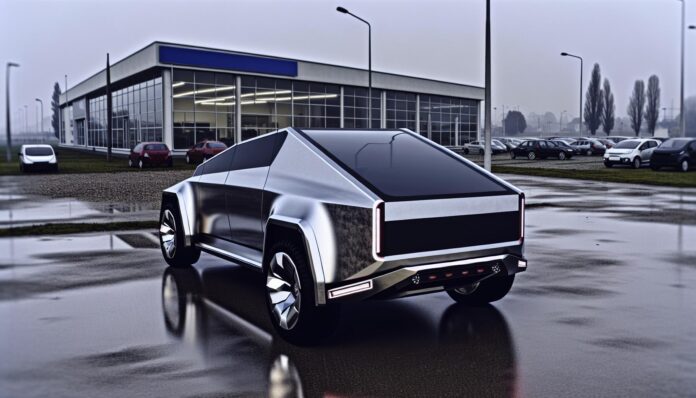Why the Automotive World Is Turning Away from Tesla’s Boldest Pickup
When it launched, the Cybertruck promised a revolution in design, technology, and performance. Most importantly, the vehicle was expected to set new standards in innovation and efficiency in the electric vehicle market. Because of the massive pre-launch buzz and millions of claimed reservations, enthusiasts believed the Cybertruck would redefine the pickup segment.
However, as time has passed, the initial enthusiasm has given way to concerns and criticism. Industry experts and potential customers now compare expectations with harsh reality. In-depth analyses, such as those presented by Consumer Guide and Investing.com, reveal that the Cybertruck has become a critical example of over-promising technology in the auto world.
The Promise vs. Reality
Initially, hundreds of thousands of preorders signaled strong confidence in Tesla’s innovative approach, with the Cybertruck serving as a futuristic symbol of automotive progress. Because it showcased a bold stainless-steel design and groundbreaking technology, the truck quickly became a symbol of technical prowess.
Nevertheless, the current reality tells a different story. The turnout in 2024 was disappointing with only an estimated delivery of 35,000 to 40,000 units, a fraction of the projected sales figures. Aside from low production numbers, the truck has not yet achieved gross margin positivity, as highlighted by prominent analysts. Therefore, Tesla’s massive investment in the Cybertruck appears to have been a strategic miscalculation that has consumed critical resources over an extended period.
User Disappointment and Mounting Criticism
The gap between what was promised and what is being delivered has sparked significant user disappointment. Many customers have taken to social media and specialized forums to report reliability issues, manufacturing defects, and questionable build quality. For instance, various online discussions on Tesla Motors Club are filled with frustrations pertaining to performance issues such as failing in off-road conditions.
Besides that, unexpected quirks like shutdowns in car washes or poor performance in snow have further fueled negative reviews. Because these issues undermine buyer confidence, the negative sentiment is compounded by reports of multiple recalls for faults ranging from throttle-pedal cover faults to sudden power losses. Additionally, Cybertruck Owners Club evidence continuing breakdowns that raise questions about the overall durability of this model.
Design: Aesthetics vs. Practicality
One of the major points of debate is the vehicle’s aesthetics. The Cybertruck’s sharp, angular design was initially seen as a bold statement in automotive styling. Most importantly, it attracted attention for its futuristic appeal. However, many observers argue that the radical design prioritizes shock value over elegance.
Critics have pointed out that the aggressive styling results in practical challenges. Because of issues such as misaligned body panels and inconsistent stainless-steel finishes, the vehicle often struggles with both comfort and reliability. For example, Honest Broker describes the design as depressingly unattractive, further intensifying public disillusionment with the vehicle’s image and usability. Therefore, while the form might have been intended to turn heads, it ultimately leads to practical compromises.
Market and Strategic Impact
The Cybertruck’s prolonged development and narrow market appeal have had significant ripple effects on Tesla’s overall strategy. Because Tesla invested considerable time and resources into this model, some argue that it diverted focus from more accessible mass-market electric vehicles. Most importantly, this diversion represents an opportunity cost that has allowed competitors to catch up in the broader EV market.
Investors and analysts warn that the continued focus on a product with limited demand could have long-term implications for Tesla’s profitability. Therefore, as the company grapples with lower-than-expected auto gross margins and increasing production challenges, the Cybertruck is seen as a resource-drain that might have delayed innovations in other segments. As discussed on platforms like Investing.com, this misstep represents a learning point in balancing bold visions against market realities.
Ongoing Reliability Issues
Beyond design and sales figures, the continued reliability issues have marred the Cybertruck’s reputation. Most importantly, early adopters report a series of mechanical breakdowns and persistent after-sales service challenges. Because these issues are being widely shared on online forums and user groups, potential buyers remain skeptical of the vehicle’s long-term performance.
Thus, the recurring problems prompt a reevaluation of Tesla’s quality control standards. Besides that, multiple independent sources report similar faults, raising doubts about the product’s readiness for a broader market. In turn, these reliability concerns further erode consumer trust in one of the most anticipated EV models of recent years.
Conclusion: A Lesson in Over-Promise and Under-Deliver
In conclusion, the story of the Cybertruck serves as a reminder that even the most hyped technological innovations are not immune to shortcomings. Most importantly, the combination of an aggressive design, underwhelming performance, and persistent reliability issues has culminated in a significant strategic setback for Tesla. Because the gap between promise and performance has never been wider for this launch, stakeholders now reflect on what needs to change in future projects.
Ultimately, Tesla’s experience with the Cybertruck emphasizes the risks inherent in over-promising and under-delivering. As the company moves forward, it needs to refocus on addressing critical user concerns and streamlining production processes. For more detailed insight on the ongoing debate, be sure to review discussions at Tesla Motors Club and the analysis provided by Consumer Guide.



